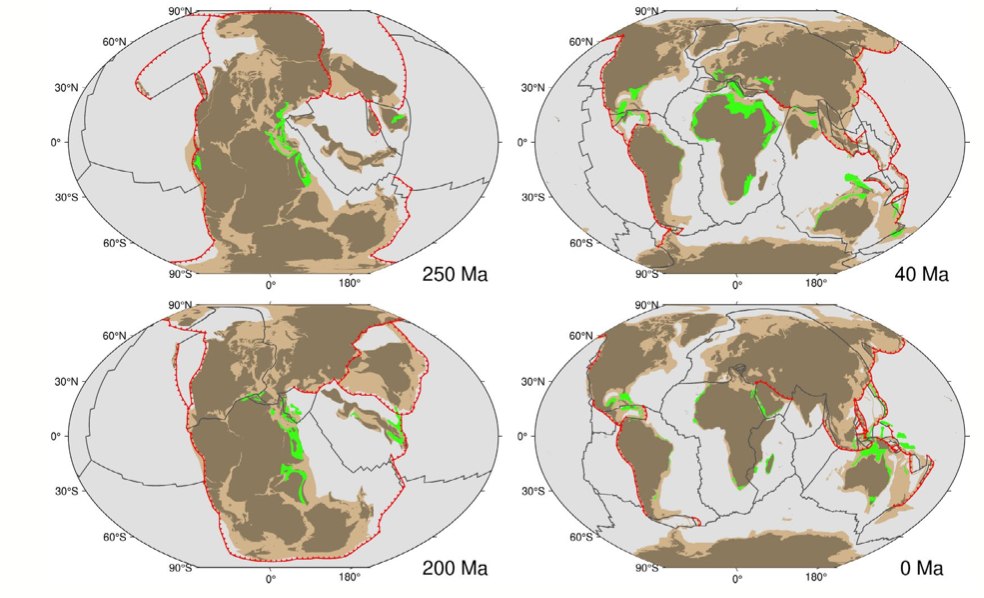 Plate tectonics, as the unifying theory in Earth sciences, controls the functioning of important planetary processes on geological timescales. Here, we present an open-source workflow that interrogates community digital plate tectonic reconstructions, primarily in the context of the planetary deep carbon cycle. We present an updated plate tectonic reconstruction covering the last 400 million years of Earth evolution and explore components of the plate–mantle system that is involved in the exchange and storage of carbon. First, the workflow enables us to estimate subduction zone lengths through time, which represent the “tap” of carbon that is released at convergent tectonic margins. Second, we explore the role of Andean-style versus intra-oceanic subduction regimes during Pangea as- assembly and breakup. Third, we provide an improved model for carbonate platform evolution since the Devonian and evaluate the interaction of subduction zones and buried carbonate platforms. Last, we present a new model for estimating oceanic age, carbon content in the upper oceanic crust, and estimated (carbon-containing) sediment thicknesses through time and present methods to track the subduction of this material through time. These components of the deep carbon cycle are key mechanisms controlling, or at least modulating, atmospheric CO2 on geological timescales and hence strongly influencing long-term climate. We find that the mid to Late Cretaceous greenhouse climates were likely driven by increased subduction fluxes of volatiles and increased subduction zone interactions with carbonate platforms in the Tethyan tectonic domain. Our work highlights the importance of community digital plate tectonic reconstructions as a framework for studying key systems, such as the deep carbon cycle, that influence the life-support mechanisms on our planet.
Plate tectonics, as the unifying theory in Earth sciences, controls the functioning of important planetary processes on geological timescales. Here, we present an open-source workflow that interrogates community digital plate tectonic reconstructions, primarily in the context of the planetary deep carbon cycle. We present an updated plate tectonic reconstruction covering the last 400 million years of Earth evolution and explore components of the plate–mantle system that is involved in the exchange and storage of carbon. First, the workflow enables us to estimate subduction zone lengths through time, which represent the “tap” of carbon that is released at convergent tectonic margins. Second, we explore the role of Andean-style versus intra-oceanic subduction regimes during Pangea as- assembly and breakup. Third, we provide an improved model for carbonate platform evolution since the Devonian and evaluate the interaction of subduction zones and buried carbonate platforms. Last, we present a new model for estimating oceanic age, carbon content in the upper oceanic crust, and estimated (carbon-containing) sediment thicknesses through time and present methods to track the subduction of this material through time. These components of the deep carbon cycle are key mechanisms controlling, or at least modulating, atmospheric CO2 on geological timescales and hence strongly influencing long-term climate. We find that the mid to Late Cretaceous greenhouse climates were likely driven by increased subduction fluxes of volatiles and increased subduction zone interactions with carbonate platforms in the Tethyan tectonic domain. Our work highlights the importance of community digital plate tectonic reconstructions as a framework for studying key systems, such as the deep carbon cycle, that influence the life-support mechanisms on our planet.
![]()
